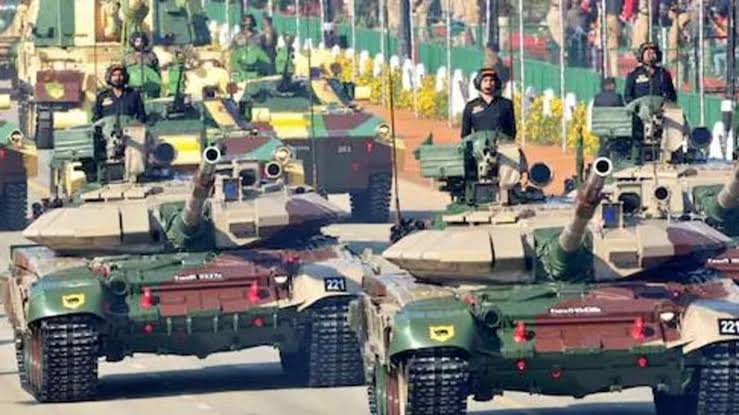India gradually shifting to military exports from military imports

By
Colonel Awadhesh Kumar
In the last 20 years, India has spent over 5 lakh Crores rupees on arms purchase. Out of this nearly INR 330000 Crores have been paid to Russia for purchase of weapons. However, now things are changing gradually but certainly. In the next decade the Indian domestic arms industry will be supplying over INR 8.5 lakh Crores worth of arms and equipment, not only to Indian Armed Forces but also to many other Countries. This will ensure India’s commitment to self-sufficiency in this vital Sector.
India is still the world’s leading arms importer. However now it has not only started reducing its imports and moving towards indigenization and Make in India but has taken significant steps to diversify its defence procurement. Where important weapons acquisitions is in considerable quantity then it certainly features joint manufacturing or technology transfer provisions be it Russia, France or now even USA.
To pose a Challenge to the then existing bipolar World Order, India carried out a “peaceful “ nuclear test in 1974. Thereafter Indira Gandhi decided to first concentrate on Missile Technology. Next in 1998 India defied the existing World Order to become a nuclear power. Today India has become totally self sufficient in Missile Technology. Even the imports of a few S 400 missile defence Systems from Russia are just essential gap fillers.
In naval constructions, India has already reached over 80 % indigenization in hull systems, nearly 70% in weapons and sensors systems and over 60% in propulsion systems.
India’s drive towards self-sufficiency in defence remains a steady and considered endeavour. A large portion of India existing conventional hardware are still of Russian origin, slowly giving way to indigenous ones. For speeding up new cutting edge technology which India has in developmental stages, the Country has turned to France and Israel. Gap filler systems have been bought from these Countries and collaboration is going on in many fields.
India’s has also made substantial purchases of various American military equipment, where these have been made available without strings. Many in the American administration forget that India is not taking military aid from any one but paying in hard cash. So as a buyer India will brook no “ interference “ …you don’t want to sell then just get lost is the Indian mantra nowadays.
India will continue to import military hardware for some more time but there is no potential shift away from Russia or France or Israel towards America. It is about ensuring that India’s domestic weapons industry get modernized through Make in India and technology transfer. India itself is working on most of the cutting edge technology but essential gap fillers are required.
The recent agreement between Biden and Modi for purchase/ sale of U.S. defence equipment like GE jet engines and Predator drones exemplify this evolving strategy. India’s agreements with the U.S. for GE fighter jet engines and MQ-9B Sea Guardian drones highlight improvement in ties. The jet engine deal emphasizes future joint manufacturing, and the prospect of assembling and maintaining Sea Guardians in India. In fact there are enough indications that if the Americans act pricey then the MQ9B deal may just fall through as Indian Tapas and other drones have made a big headway. So now it’s for the Americans to grab as much of the Indian money as they can by being a good MERCHANT.
Eric Garcetti, the U.S. ambassador to India, acknowledges this shift, highlighting increased technology sharing with India compared to some of the U.S.’s closest allies. He also has to tell Biden and the State Department that US has to be more amiable or they lose. Though the complex landscape of international defence technology sharing means that many will try to prevent / delay the Indian autonomy as much as possible. Stringent U.S. regulations currently will limit the extent of technology transfer to India. However the old days of CRYOGENIC ENGINE saga is over.
Also though India has started buying defence equipment from the U.S.,ties with Russia will not be abandoned. Experts point out that a comprehensive transition from Russian will be completed only when 100% Atmanirbharta is achieved. India is presently facing some delay, though not alarming, because of Russia’s conflict with Ukraine, which has hampered Moscow’s timely supply of arms and equipment orders.
The primary objective for India is to ensure that technologically and militarily it is able to take on a combined China Pakistan Axis. Presently some delay may be there in supply of remaining two regiments of S400 and the two SSGNs. However work on India’s own fully integrated missile defence system and indigenous SSGNs is progressing quite well.
So someone like Bill Greenwalt, a former senior Pentagon official responsible for industrial policy, has rightly indicated that the era of U.S. and Russian dominance in the global defence market and their control over defence technology is gradually fading.
In case U.S. wants to grab a bigger share of the Indian arms market then it has no choice but to nullify its rules for International Trafficking in Arms Regulations (ITAR), with respect to India. As it is India is not going to sign any treaty alliance comparable to the AUKUS agreement.
India’s participation in the QUAD alliance, alongside the U.S., Japan, and Australia, strengthens its presence in the Indo Pacific but in no way dilutes its longstanding association with Russia.
Nowadays India decides its own response to any regional or international Ocurrences.



